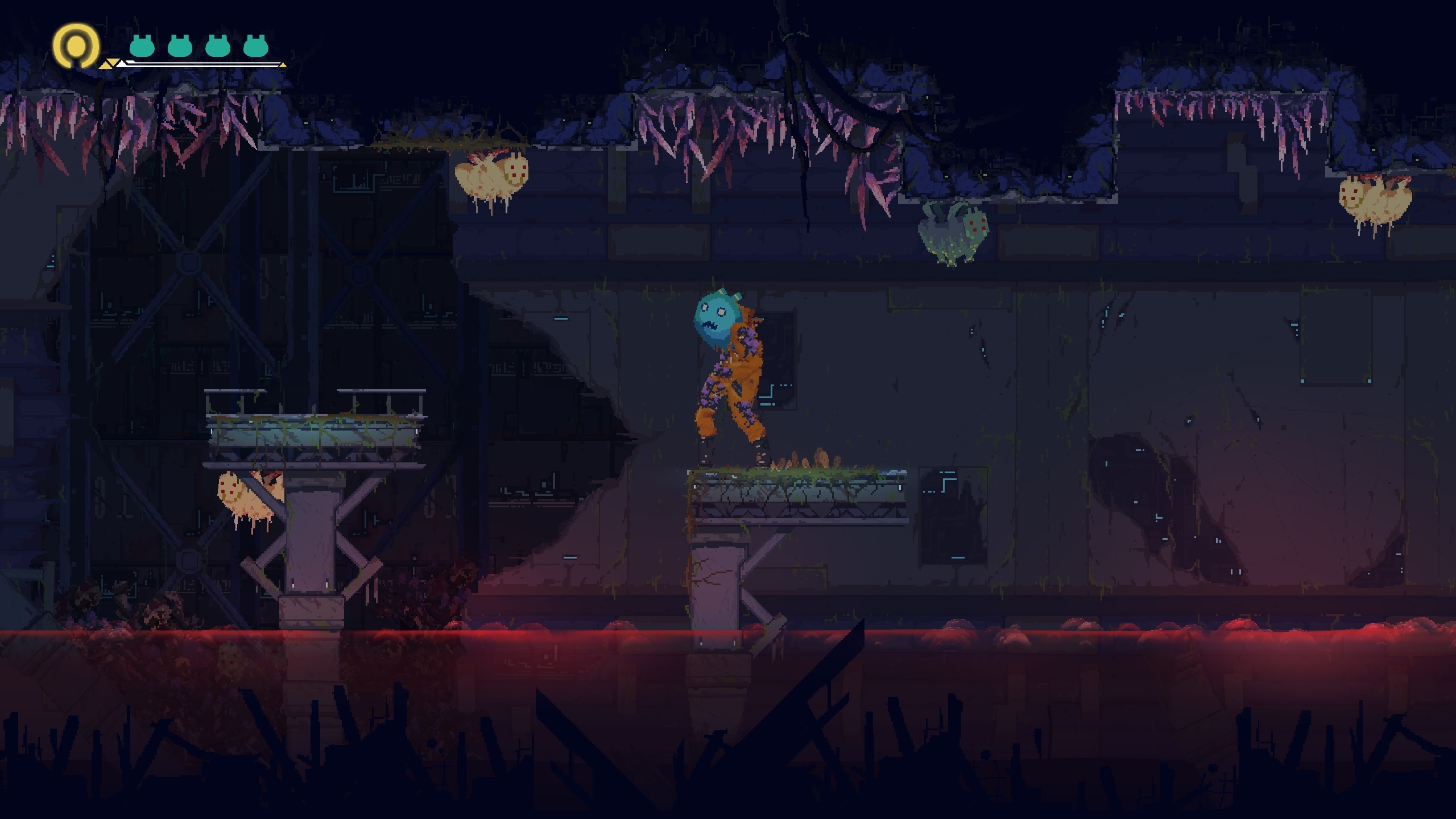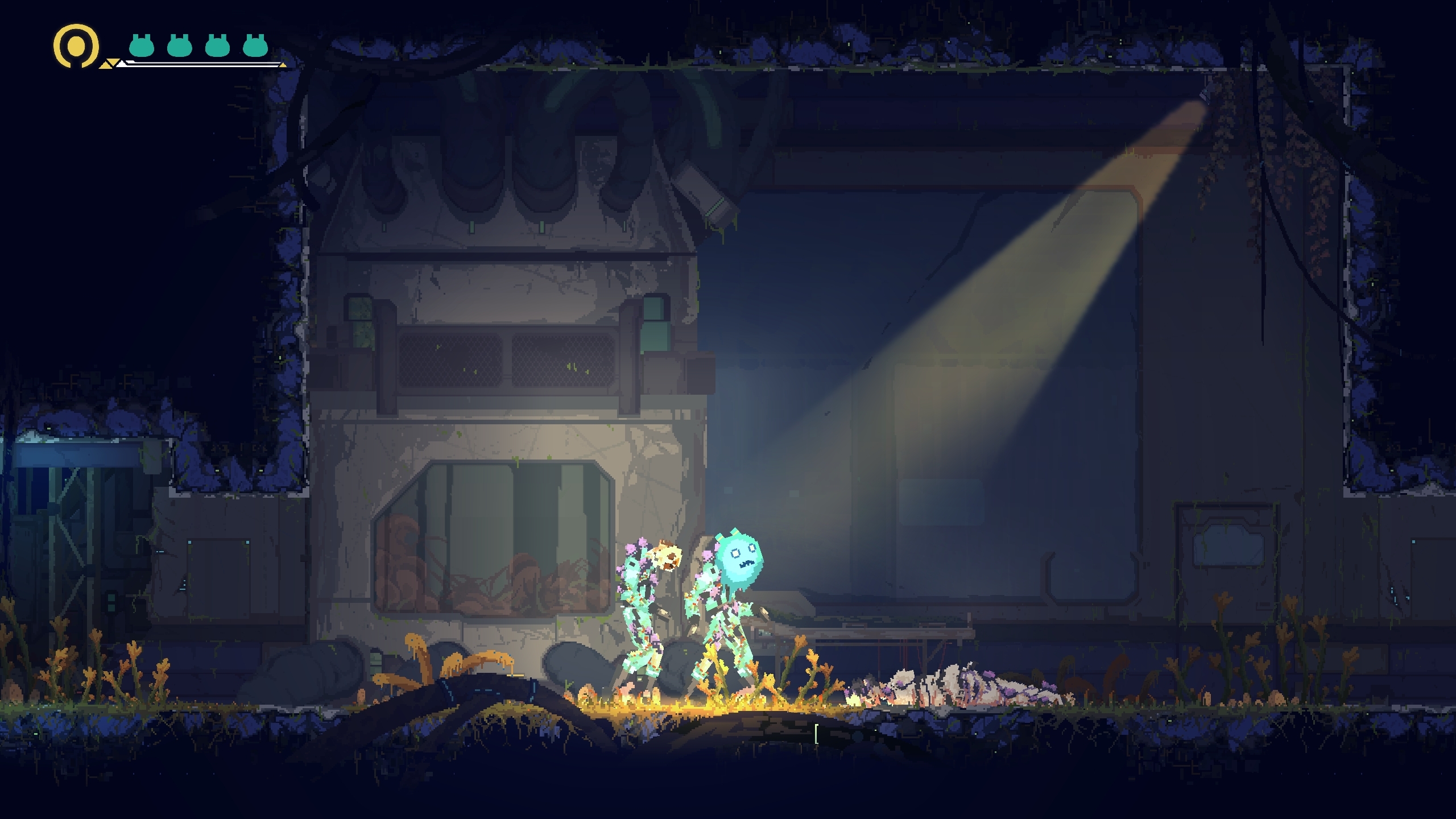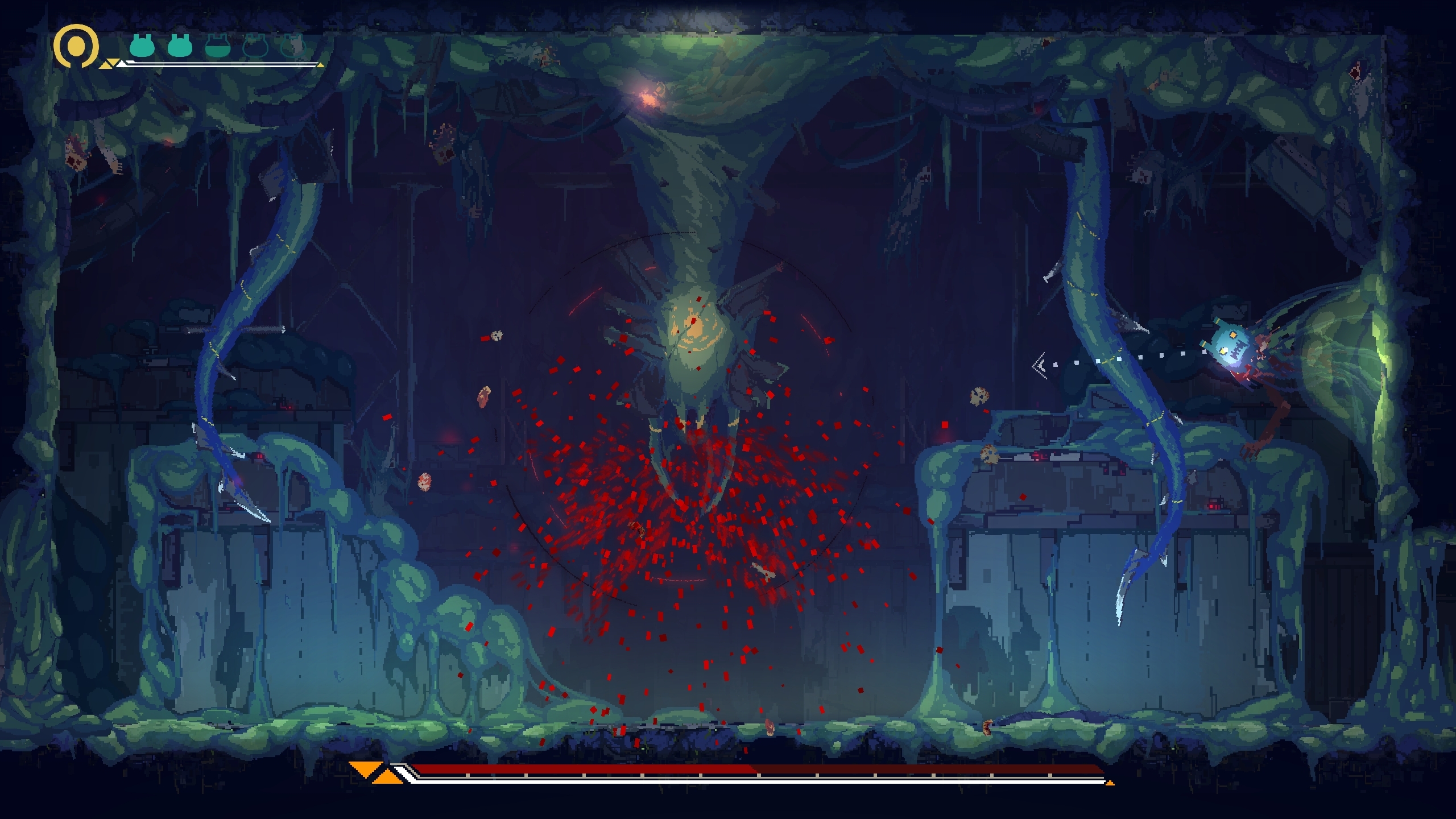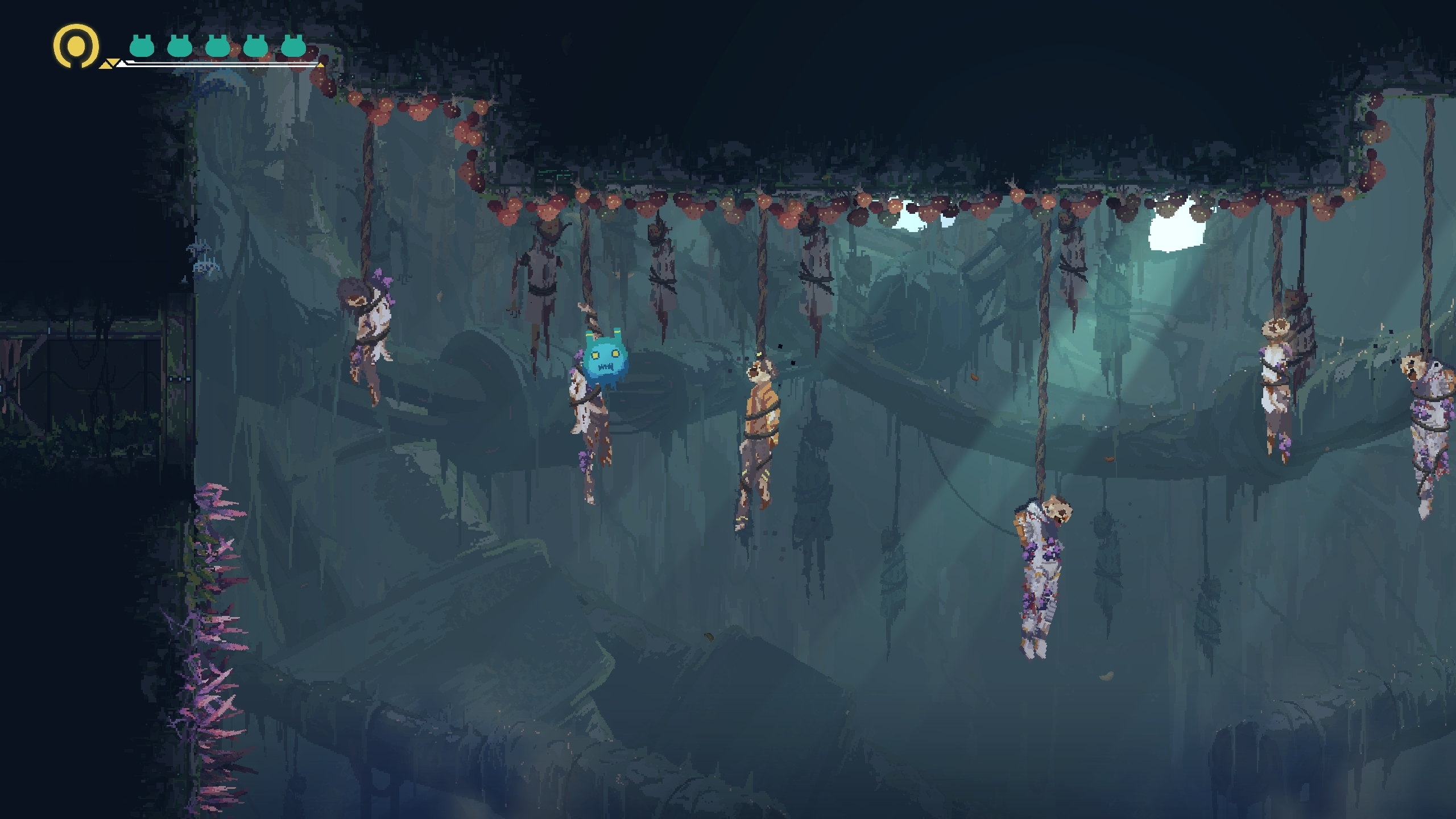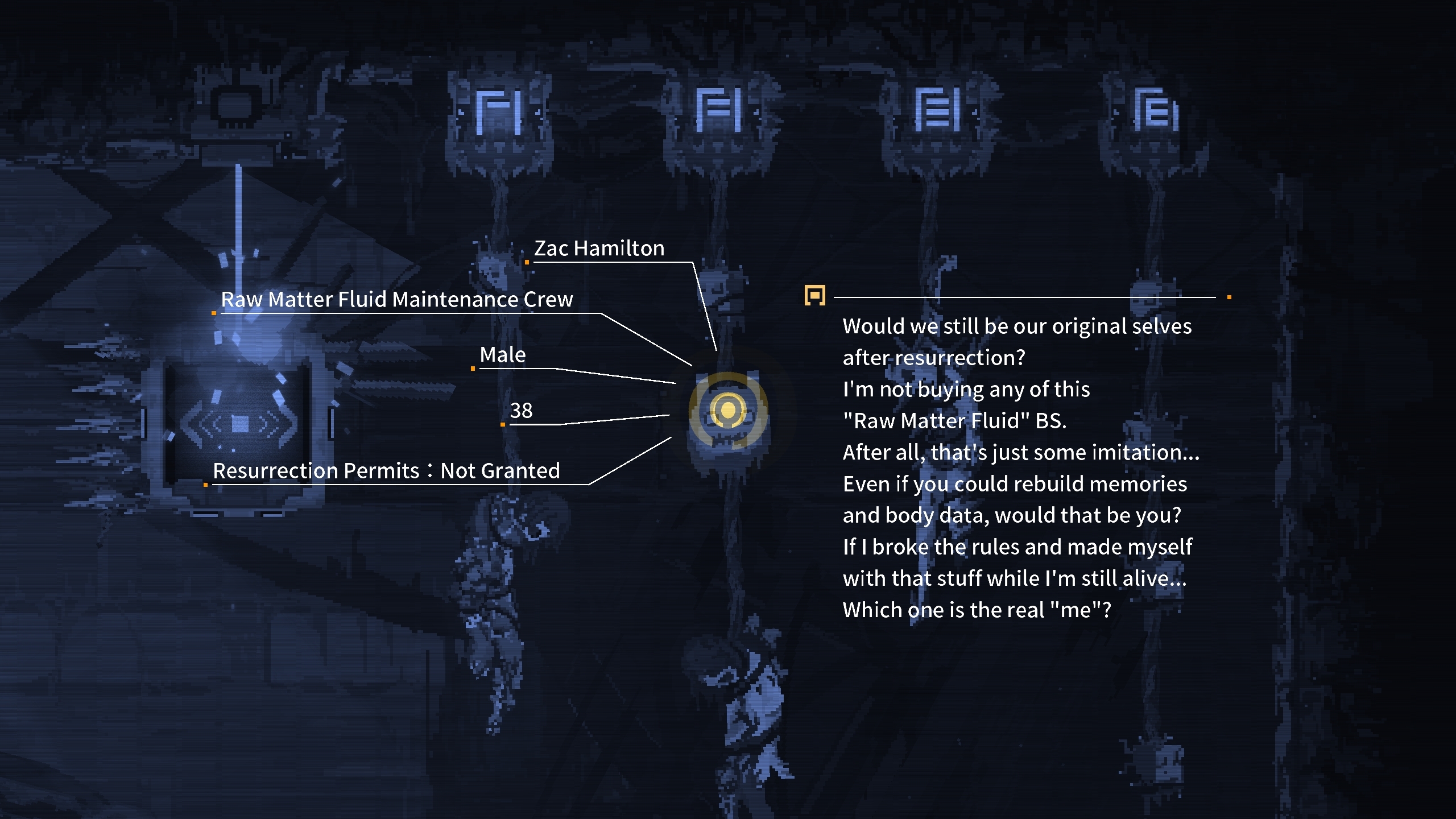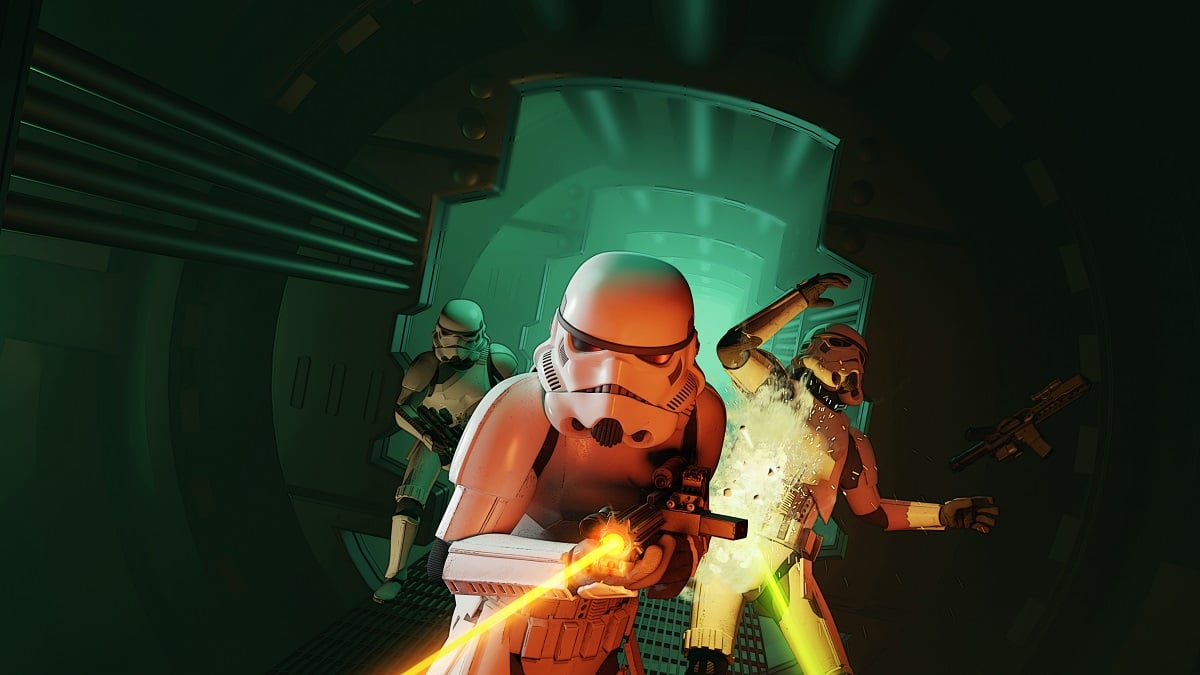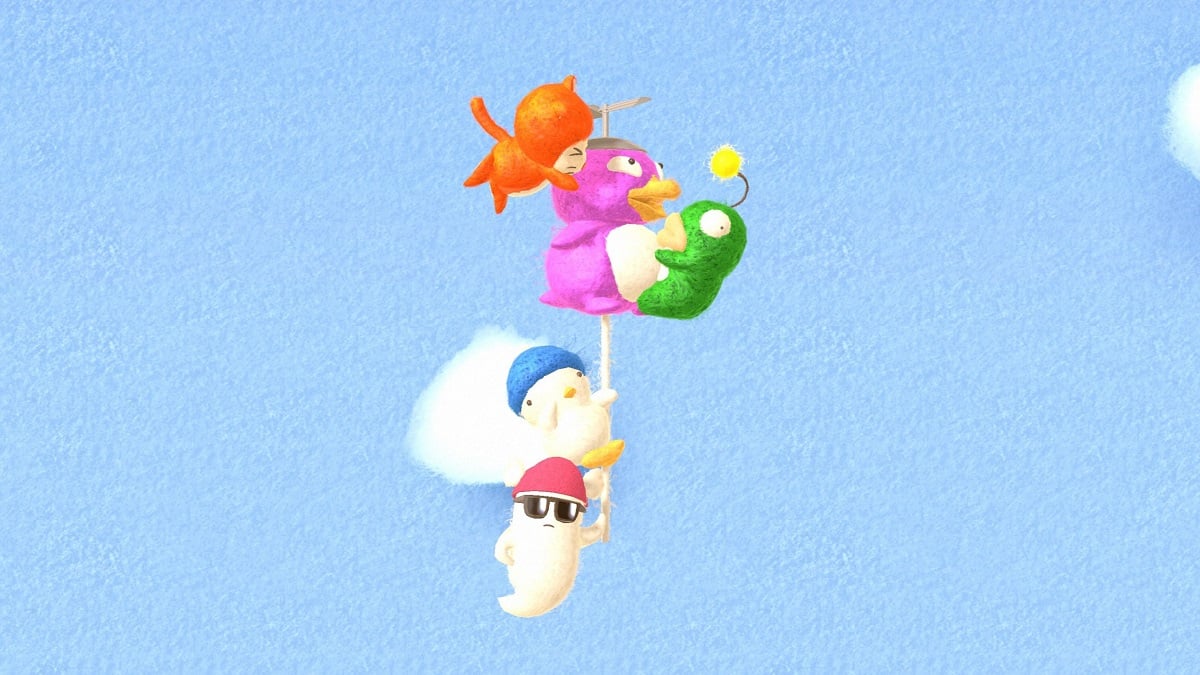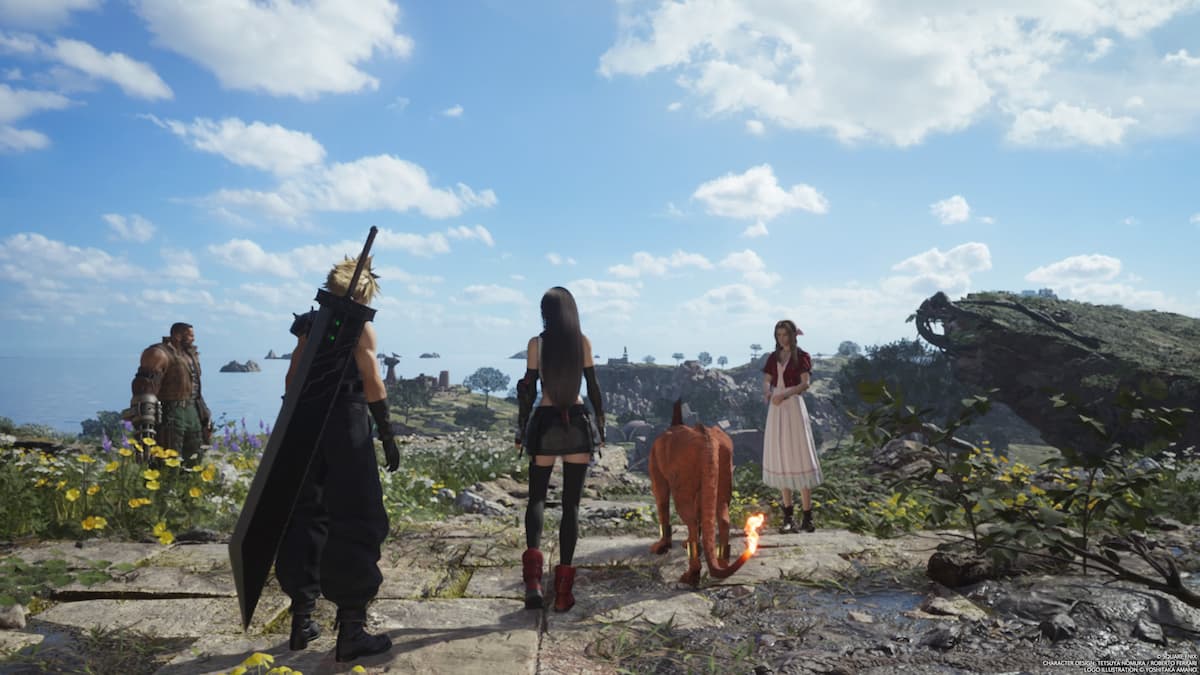
I’m virtually tempted to rejoice the appallingly named MO: Astray for not being a Metroidvania. I loves me some Metroiding, but it surely’s proved an actual pleasure to play an action-platformer that focuses on steady development and not using a hint of backtracking. It’s particularly a pleasure when it occurs in a game as exactly designed as this.
MO, I’m right here to report, is a blue blob. Seemingly manufactured after some really-quite-colossal scientific disasters in an underground facility, it requires you, very merely, to get it the hell out of there. Doing so goes to take you on an extended, twisty, puzzly, ever-changy journey by some very fairly pixel-painted subterranean realms. And with some very particular motion.
Being a blob, Mo (let’s drop this meaningless capitalisation) oozes about moderately sluggishly, albeit fairly adhesively. He’s able to sticking to the perimeters and underneaths of partitions and objects for a restricted time, earlier than squelchily peeling off and falling. Fortunately, his similarity to a backyard mollusc ends right here, as he’s able to quickly projecting himself by the air. Ideally directed with a controller, Mo strikes on the left stick, whereas the fitting stick goals an arrow pointing away from him. Press a set off and he spoings off in that course. And that is your main methodology of motion – think about Dandara, however along with her pockets and sneakers filled with goo.
This motion conceit is the springboard from which the game’s ever-evolving puzzles boing. There’s numerous probably apparent picks: dodging spikes, hitting buttons, navigating shifting platforms, and so forth. But all are deployed with actual finesse and completely pixel-perfect distance placement, to make issues fairly tough, however constantly and defiantly honest. (The biggest barometer of game equity I’ve found through the years is the query of to whom I instinctively intention my invective on failure. When I shout at a game, one thing’s mistaken. When I name myself creative swears, it’s totally my fault.)
As you progress, new skills are gained, and it’s right here that merely ‘not being a Metroidvania’ finally ends up feeling like a luxurious. Because moderately than retracing your steps to do what couldn’t be performed earlier than, right here it’s the game that adjusts to what now you can do. So when you may double-jump, or speed-dash, and so forth, the challenges change accordingly – all recent, all new. Now, I realise I’m describing the easy reality of what number of platformers labored for a few years, however lately it feels refreshing.
The game additional emphasises its puzzly methods with the introduction of an occasional blob-clone. Passing by one specific ray creates a less-able model of your blob elsewhere on the display, and all of a sudden you’re taking part in single-player co-op to transverse the problem, typically in intricate ways in which require a bunch of apply to get proper.
This, I think, is the place Mo might lose some individuals. It does sometimes dip its toe just a little too deeply into the murky waters of shock deaths, requiring you to replay sections a bunch of instances till you may work out how they’re navigated. This isn’t the norm, and often it’s not my choice in any respect, however the game is so eminently affordable about the way it handles this that I discovered it arduous to begrudge. Death solely ever units you again to the beginning of the newest leapy problem – virtually too beneficiant a provision, if something – so repeated makes an attempt are as rapid and unpunishing as potential.
Perhaps a shocking twist, given the gorgeous pixel palette, is kind of how macabre and gory the game is. I moderately shortly modified my thoughts about letting my boy watch me play, after far too belatedly leaping ahead to cowl up a selected ugly second with my arms. But it’s splendidly grisly! In the game’s story your enemies are, at first, people corrupted by some type of alien plant. Mutants, typically grimly depicted, which you can dispatch in blood-soaked incidents of falling surroundings. When you get the sprint transfer, leaping on and off them rips their head hideously from their shoulders. I beloved it. But it was not for the boy.
You’re leaping on the mutants’ heads within the first place, by the best way, as a result of it means that you can take momentary management of them. Sometimes that is so you may transfer them about: to open a door with a hand-scanner, or pull a lever. Other instances it’s to make use of them as platforms, like as an illustration if you discover a assortment of them hung appallingly from steel hooks, and bounce between their heads in probably the most tasteless trend. lastly and most apparently, everytime you’re on their faces, you’re capable of learn their minds, discovering out who they have been and studying their final ideas. And this works for each single humanoid enemy within the game, with every bearing a novel description and story.
On that be aware, it’s value noting that this prolonged game does moderately over-burden itself with story. There are the scenes between chapters. There are the comedian ebook summaries. There are the flashbacks of a few of the corpses. There are the bursts of texts when choosing up additional life. There are the scans of mutant brains. And most of all, there’s the voice that often blabbers away when you’re taking part in. Most of those are superb, all including to a reasonably commonplace story of Science Gone Wrong, and increasing right into a extra loosey-goosey mishmash of different creatures and lifeforms.
It’s forgettable, however a pleasant sufficient background. The solely actual subject is that voice, which appears to offer a very powerful guiding info, but exists solely as a woo-wah nonsense sound with subtitles – subtitles that seem when you’re in the midst of stuff. I can’t let you know what number of strains I missed as a result of the voice determined to start out its blither whereas I used to be in the midst of an intricate sequence of tough jumps and catches.
I don’t need to over-egg the gelatinous pudding, however I do need to rejoice how good MO’s controls are yet another time. This is the type of game that would solely have been an entire success or an unlimited failure, and the distinction might be solely a micron large. But the truth that I’m so gleefully bouncing between gradual and quick dashes, hovering in mid-air to make split-second selections, dodging previous swinging spikes to land on a platform simply in time to modify over to a clone to hit a button… Those are the types of requirements I anticipate from Nintendo, not from a pupil developer group.
I’ve completely beloved this. It’s so refined, so properly crafted, so supremely gory for one thing with such deceptively easy presentation, and has a problem pitch that feels at all times difficult, however remarkably honest. At a measly £11, you’d be foolish to not give it a go.
